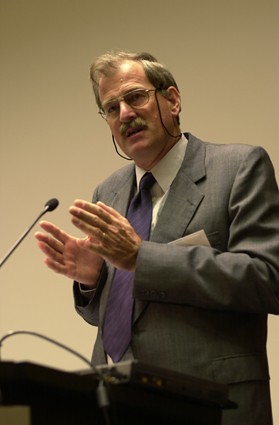
Watch this 11-minute video of a slide presentation made by ILRI Director General Carlos Seré in Los Banos, the Philippines, in late 2010 (video produced by the International Rice Research Institute).
In a slide presentation on ‘Reinventing Agriculture in the 21st Century: Livestock Systems in Africa,’ Carlos Seré, director general of the International Livestock Research Institute (ILRI), made three main points.
First, livestock is the fastest growing part of developing-world agriculture. It’s the ‘demand pull’ that can drive these agricultural systems.
Second, these are all ‘mixed systems’, with crop growing mixed with livestock raising; understanding the interactions between them is essential for the design of any strategy for agricultural development.
Third, we have a lot of the building blocks to achieve ‘sustainable intensification’ of smallholder agricultural production, but the real challenge is much more institutional in nature—how do we tie everything together, scale out the best interventions, and deliver them effectively?
Data from the United Nations Food and Agriculture Organization (FAO) tells us that the most important agricultural commodity in the world is cow’s milk, followed by rice, cattle meat, pig meat, chicken, wheat and eggs . . . So we can see that livestock is central to the global agricultural sector and becomes increasingly so as societies develop. In developing countries, rice is the number one commodity, followed by indigenous cattle meat and cow’s milk.
Due to population growth and other factors, the developing world’s livestock systems are changing fast and in big ways. Science can help the world’s poorer livestock keepers to work with these trends.
Most people in developing countries live in areas where mixed crop-livestock systems predominate. That is something we tend to forget: we tend to come in with a specific disciplinary approach, looking at crops or trees or livestock in isolation, when all these and more are integrated in a whole agricultural system that we must attend to.
Seré summed up his presentation by saying that livestock is the motor that brings in cash to smallholder mixed farmers. While cereals sustain the family, animals are the cash source. There’s a lot of potential to help small-scale livestock keepers to reduce the amount of greenhouse gases produced per kilo of livestock output. A lot of the techniques and interventions needed to intensify smallholder food production are already there; the challenge is how to bring them all together at scale and in useful ways for the farmer.
